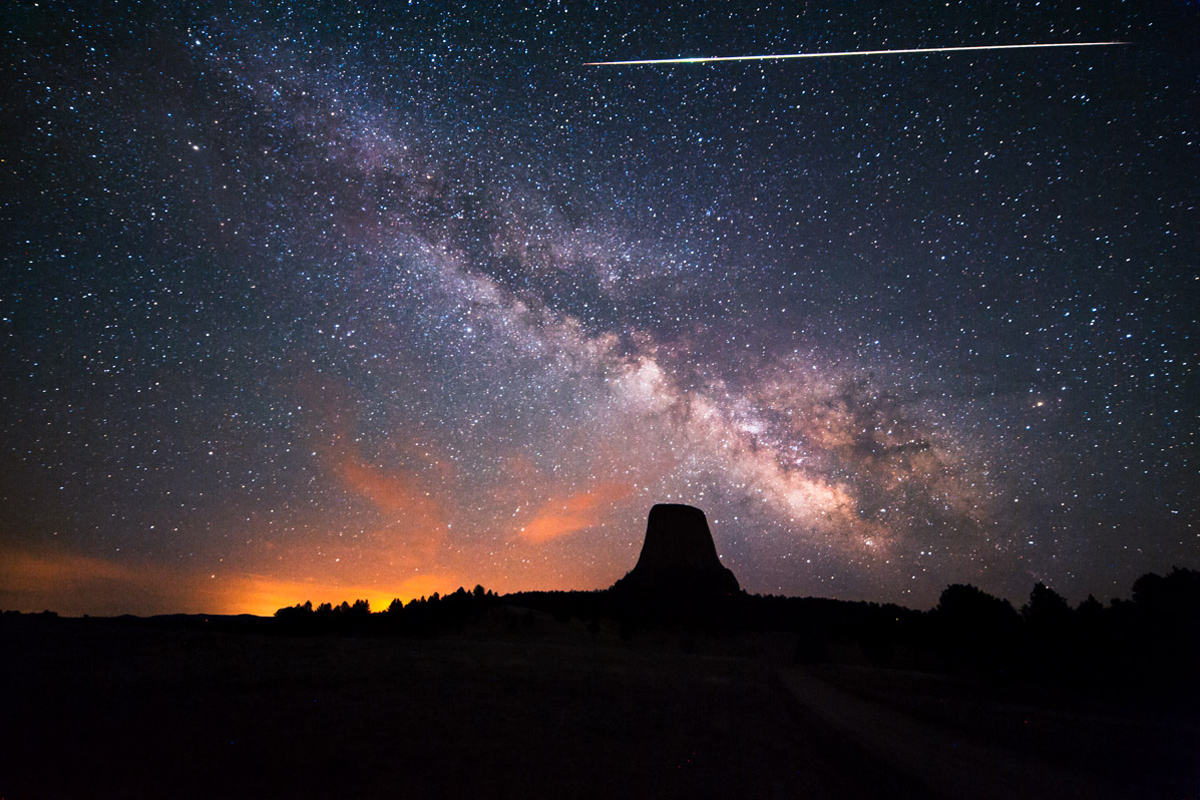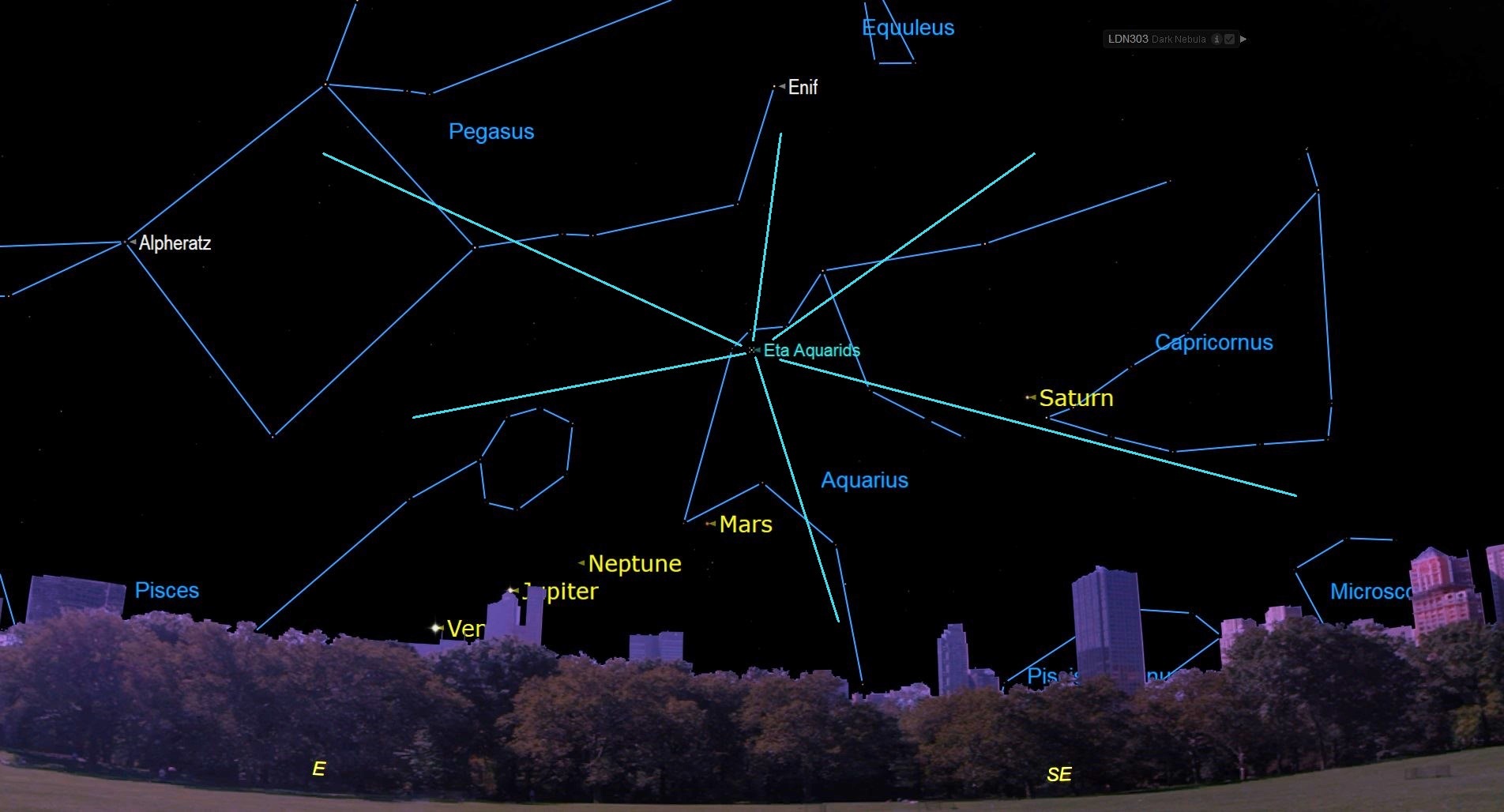The Eta Aquarid meteor shower of 2022 is peaking now. Here's how to see it.
Your best bet to see shooting stars early Friday, May 6, is to get up after midnight once the moon sets.

Early risers can catch as many as 30 meteors an hour, weather permitting, during an overnight shower peaking Friday (May 6).
The Eta Aquarid meteor shower, which originates from Halley's Comet (1P/Halley) and is visible in the southern constellation Aquarius, will be best visible around 3 a.m. local time after the crescent moon sets and the sky grows a little darker for the sky show.
While the meteor shower is most visible from the Southern Hemisphere or close to the equator, Northern Hemisphere residents should keep an eye out, stated Bill Cooke, who leads NASA's Meteoroid Environment Office at the agency's Marshall Space Flight Center in Alabama.
Related: Eta Aquarid meteor shower 2022: When, where and how to see it
"It will be interesting to see if the rates are low this year, or if we will get a spike in numbers before next year's forecast outburst," Cooke said in a NASA post Wednesday (May 3).
If you're hoping to capture photos of Eta Aquarid meteors, our guide on how to photograph meteor showers can help. You can also use our best cameras for astrophotography and best lenses for astrophotography guides to prepare for the next meteor shower.
There is always some uncertainty in predicting meteors as they arise from a stream of debris left behind by some celestial object, usually a comet. Halley's Comet comes through our solar system every 75 or 76 years, but its debris trail remains persistent.
Breaking space news, the latest updates on rocket launches, skywatching events and more!
The trail shifts over the years due to gravitational influences of the planets, meaning the Earth may run through more or fewer meteors in a particular year depending on how thick the debris is in our orbital zone.
Shooting stars are completely harmless, as they occur high in the atmosphere. When you read about meteorites making it to the ground, those come from much larger space rocks that tend to be associated with fireballs.
The meteor shower is known for its swiftly moving streaks with long trains, the American Meteor Society states. Eta Aquarids have been clocked zooming through the atmosphere at 41 miles (66 kilometers) per second.
Editor's note: If you snap an amazing photo of an Eta Aquarid meteor or any other night-sky sight and you'd like to share it with Space.com for a story or image gallery, send images, comments and location information to spacephotos@space.com.
Follow Elizabeth Howell on Twitter @howellspace. Follow us on Twitter @Spacedotcom and on Facebook.

Elizabeth Howell (she/her), Ph.D., was a staff writer in the spaceflight channel between 2022 and 2024 specializing in Canadian space news. She was contributing writer for Space.com for 10 years from 2012 to 2024. Elizabeth's reporting includes multiple exclusives with the White House, leading world coverage about a lost-and-found space tomato on the International Space Station, witnessing five human spaceflight launches on two continents, flying parabolic, working inside a spacesuit, and participating in a simulated Mars mission. Her latest book, "Why Am I Taller?" (ECW Press, 2022) is co-written with astronaut Dave Williams.

